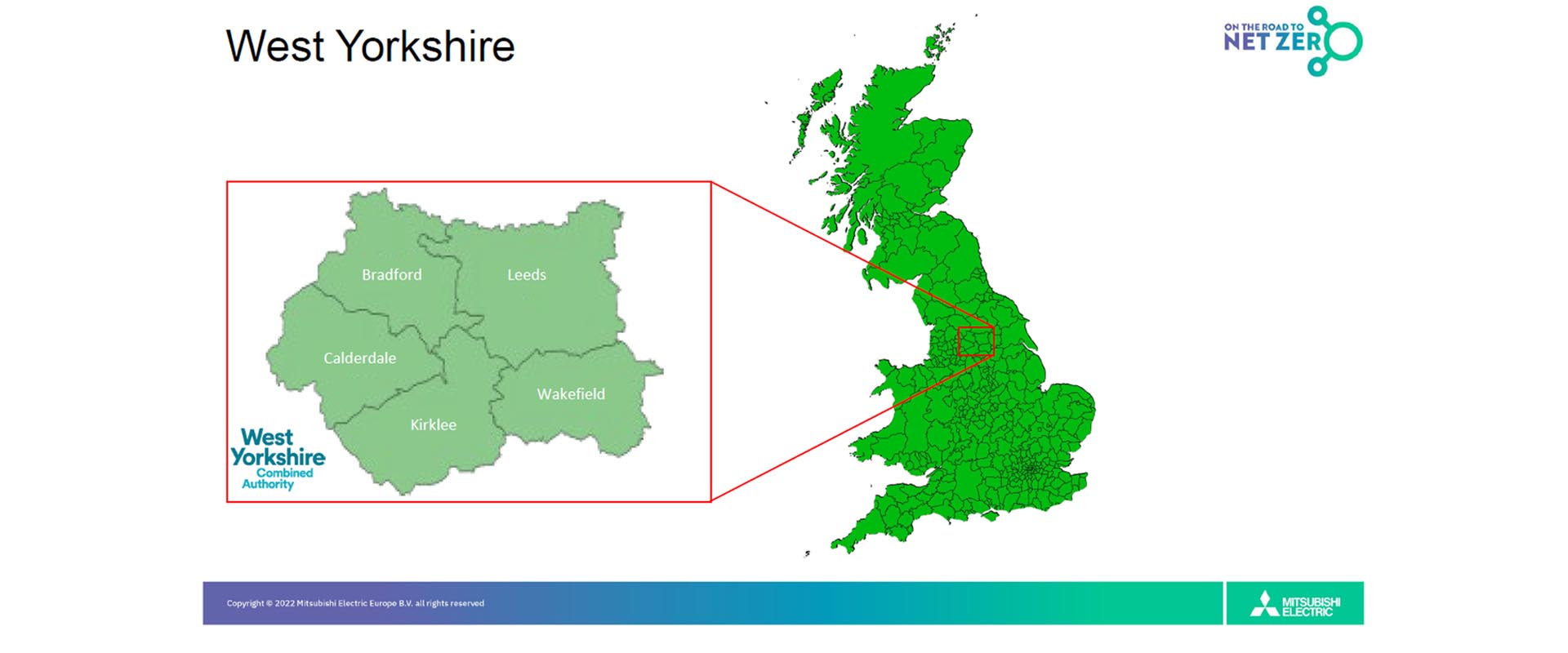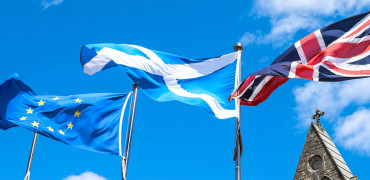In the next sequence of our Net Zero Roadshow, I want to take a brief look at West Yorkshire but I thought it worth a quick reminder of what we actually mean by Net Zero as it is all too easy – especially in the HVAC industry – to assume people understand what you’re talking about.
The UK has signed up to legally binding targets to reduce its contribution to global warming by reducing emissions to Net Zero by 2050.
This is a major step from where we are today and the transition to Net Zero will require a concerted effort and action by all of us.
However, we can get there, and we can achieve most of this using existing known technologies.
One thing that is certain though, is that we will not be able to get to Net Zero by carbon offset or carbon capture alone.
One tree offsets about one tonne of CO2 throughout its 100-year lifespan. With regards to carbon capture, we currently capture 40 Mt and need to capture more like 5,635 Mt by 2050!
This offers a significant opportunity for the HVAC industry to demonstrate that we have the technologies to help
Significant progress
So, there is a long way to go but several local authorities have stated to make significant steps.
When we visited Leeds in May to present our Road to Net Zero Raodshow, we focused on the West Yorkshire Combined Authority covering Leeds, Bradford, Calderdale, Kirklee and Wakefield.
The Combined Authority has declared a climate emergency and has also set a science-based target to be Net Zero Carbon by 2038, with “significant progress” by 2030. All five local authorities listed have also declared climate emergencies.
West Yorkshire has committed to being a net zero economy by 2038. The Authority’s plan has 8 themes for action:
- Leadership
- Cross-Cutting
- Transport
- Sustainable Homes
- Business & Industry
- Energy Generation, Supply & Flexibility
- Natural Environment
- Climate Ready

West Yorkshire Combined Authority
Covers Leeds, Bradford, Calderdale, Kirklee and Wakefield
Heat decarbonisation
For the section on Energy Generation, Supply & Flexibility, the plan talks about Heat Decarbonisation and states: “We will identify the suitable locations for the implementation of different heat decarbonisation technologies and explore mechanisms to accelerate their implementation.”
The way that the Authority believes it can achieve this decarbonisation of heat, offers a significant opportunity for the HVAC industry to demonstrate that we do indeed have the technologies, the skills and the expertise to help.
The Authority’s plan talks of:
- Considering the case for establishing a dedicated team focused on the decarbonisation of heat across homes and businesses.
- Refreshing our approach to the delivery of district heat networks.
- Establishing new programmes relating to heat pumps.
- Developing and implementing a heat decarbonisation hierarchy for inclusion, as appropriate, in Local Plans across the region.
- Developing heat zoning plans for West Yorkshire that could be applied to new and existing developments via local planning policy.
Taking the lead
If you’ve read my other articles on the Road to Net Zero, then you will know that at each roadshow, we looked at local authorities working in conjunction with each other, such as the work being done in West Yorkshire, but then we also zoomed in on one individual authority within that region.
In this case, it’s Leeds and this is the largest conurbation in the region and, like many other busy cities, it encompasses both urban and rural areas.
Leeds published its Net Zero carbon Roadmap in 2021 and this takes a detailed look at the steps that the authority has to undertake, and the key dates, if it is to get anywhere near the Net Zero by 2030 target it has set itself.
Like all the other local authorities I’ve focused on, the Leeds Roadmap looks predominantly at the work that the council can do itself and focuses on its own operations and buildings.
This is because Leeds, like many others, has realised that it cannot work in isolation and the carbon footprint of the city is dependent on what its neighbours are doing, and what central government has planned with regards to the environment.
What Leeds has done though, is look at the potential costs of getting to Net Zero and how it is possible to set science-based carbon reduction targets.
The plan also details the improvements in areas such as street and office lighting, improving the fabric of buildings, and the number of heat pump installations needed each year to help achieve Net Zero.
The Leeds Local Plan takes this further by looking at policy options that will deliver zero carbon developments and specifically looks at how these developments can address carbon reduction, green and sustainable infrastructure, while mitigating any flood risk and building memorable places that people want to live in.
The rationale behind the Local Plan is to:
- Reduce construction impacts through whole life carbon assessment.
- Reduce operational energy use through improvements in the energy efficiency of buildings.
- Increase renewable energy supply.
- Off-set any remaining carbon.
We all need to get involved
At the time of writing, the Local Plan is still out for consultation, which is worth highlighting as this for me is one of the key points about any of these plans.
Regardless of who you are and where you live, you need to get involved and you will only do so if you are consulted and made to feel that your opinions count.
Leeds, like other Authorities has realised that without bringing along ordinary people, this is going to be a whole lot harder.
There is still a way to go, but many authorities and companies are making great strides. If you would like to know more, come and talk to us.
Chris Newman is Zero Carbon Design Team Manager



